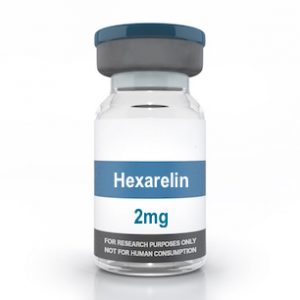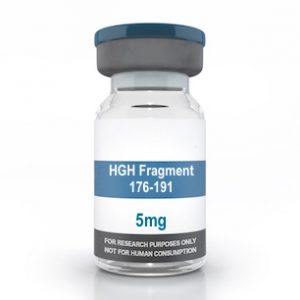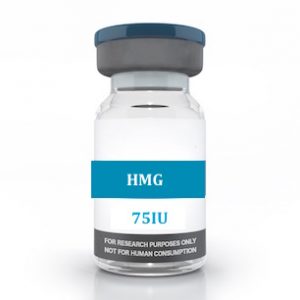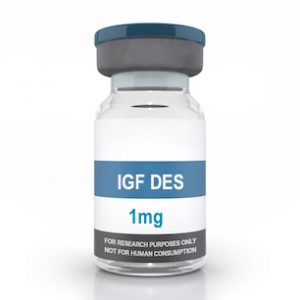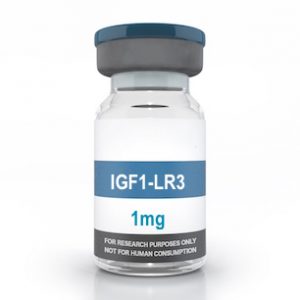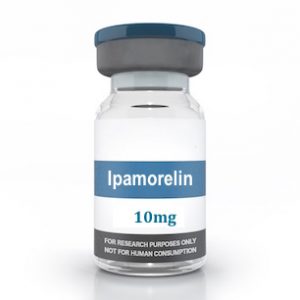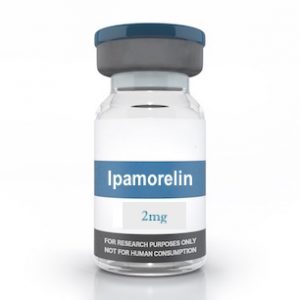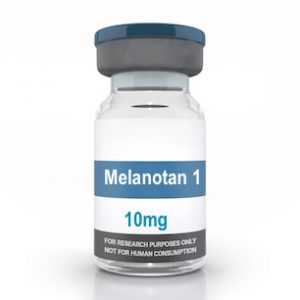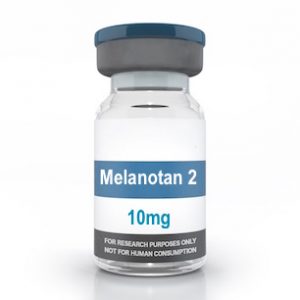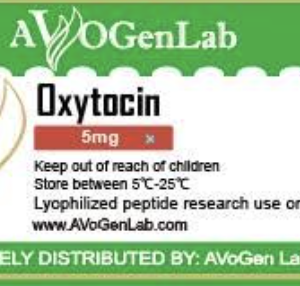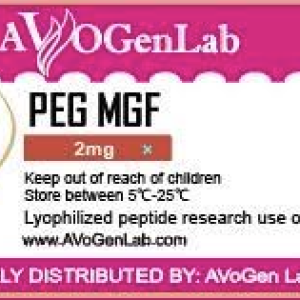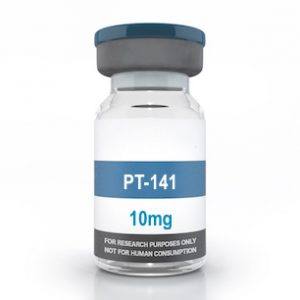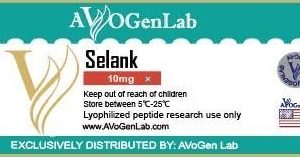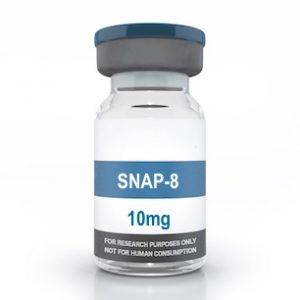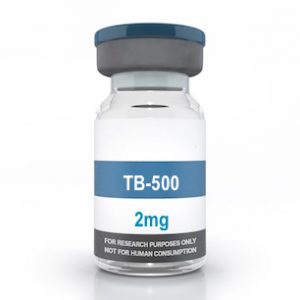-
- Out of Stock
- US Domestic Peptide
Hexarelin 2mg
- $19.50
- Hexarelin (HEX) is a synthetic peptide GH secretagogue that stimulates the release of growth hormone (GH). It was developed by Mediolanum Farmaceutici and is commonly used as a treatment of GH deficiency. Athletes and bodybuilders also use it as a performance enhancement drug. Through the stimulation of the secretion of natural Growth Hormone, Hexarelin increases the strength, the growth of…
- Read more
-
-
- Out of Stock
- US Domestic Peptide
HGH Fragment 176-191 5mg
- $29.50
- Frag 176-191 is a modified amino acid sequence of growth hormone. The lipolytic activity of Frag 176-191 was confirmed by several published studies. The compound acts directly on the adipose fat tissues, increasing lipolysis and decreasing lipogenesis. Studies are being conducted on the compound since the early 1970’s. Frag 176-191 is rich in proline and proteases, as reported by a…
- Read more
-
-
- Out of Stock
- US Domestic Peptide
HMG 75iu
- $21.50
- Discover the Benefits and Properties of HMG (Human Menopausal Gonadotropin) Initially, the drug known as HMG was invented in order to help women conceive. It is a fertility medication which triggers the production of FSH (follicle-stimulating hormone) and KH (luteinizing hormone) in a woman’s body, thereby making her more likely to ovulate. However, this drug’s usage has evolved over time…
- Read more
-
-
- Out of Stock
- US Domestic Peptide
IGF DES 1mg
- $39.50
- GF1-DES (Insulin Growth Factor – 1 DES) is a human recombinant analogue of somatomedin- C with insulin-like properties. IGF1-DES contains 67 amino acids chain that mimics insulin structure. Growth hormones such as Somatomedins (IGFs) are vital for growth and development. The physiological role of the molecule is positive for protein synthesis, glucose and amino acids transport into the cells, RNA…
- Read more
-
-
- Out of Stock
- US Domestic Peptide
IGF1-LR3 1mg
- $48.50
- IGF1 LR3 (Long R3 Insulin-like Growth Factor) is a polypeptide hormone with properties similar to insulin. However, LR3 is a modified form of IGF1 to increase half-life and to prevent deactivation due to protein binding. IGF1 LR3 contains 83 amino acids with substitution of Arginine instead of Glutamic acid at position 3. Altered polypeptide sequence prevents protein binding and increases…
- Read more
-
-
- Out of Stock
- US Domestic Peptide
Ipamorelin 10mg
- $34.50
- Ipamorelin, also called as NNC 26-0161, is a pentapeptide, Ghrelin receptor agonist, and selective secretagogue of growth hormones. The short chain peptide contains five amino acids with a long half-life. Ipamorelin demonstrated significant growth hormone releasing capability in experimental studies including in vivo and in-vitro. The action of Ipamorelin mimics GHRP-6 promotes growth hormone release from the pituitary cells by…
- Read more
-
-
- Out of Stock
- US Domestic Peptide
Ipamorelin 2mg
- $18.50
- Ipamorelin, also called as NNC 26-0161, is a pentapeptide, Ghrelin receptor agonist, and selective secretagogue of growth hormones. The short chain peptide contains five amino acids with a long half-life. Ipamorelin demonstrated significant growth hormone releasing capability in experimental studies including in vivo and in-vitro. The action of Ipamorelin mimics GHRP-6 promotes growth hormone release from the pituitary cells by…
- Read more
-
-
- Out of Stock
- US Domestic Peptide
Melanotan 1 10mg
- $21.50
- Melanotan 1 is a naturally occurring melanocorticotrophic hormone that induces melanogenesis (skin pigmentation). Melanotan 1, also called Afamelanotide, protects skin from harmful sunrays and UV damage by non-selective binding with melanocortin receptors. The biochemical was synthesized by scientists at the University of Arizona. The efficacy of Melanotan 1 is 1000 times more potent than naturally occurring alpha-MSH. Research studies are…
- Read more
-
-
- Out of Stock
- US Domestic Peptide
Melanotan 2 10mg
- $29.50
- Melanotan 2 (MT-2) is a man-made version of alpha melanocyte stimulating hormone (MSH), a melanocortin peptide hormone. It was first synthesized by researchers at the University of Arizona for melanogenesis, and to increase libido effects in men. The peptide mimics melanogenesis and UV-protective effects of Melanotan 1. However, recent research evidences suggest aphrodisiac effects of Melanotan 2. Due to protective…
- Read more
-
-
- Out of Stock
- US Domestic Peptide
Oxytocin 5mg
- $24.50
- Oxytocin is a synthetic form of naturally occurring hypothalamic hormone. After secretion, oxytocin is released into the blood circulation by the pituitary gland. The polypeptide molecule contains 9 amino acids. In 1953, oxytocin was first synthesized by the scientists, and it is one earliest sequenced peptide molecules. The prime role of oxytocin is neuromodulation in the brain. Additionally, the hormone…
- Read more
-
-
- Out of Stock
- US Domestic Peptide
PEG-MGF 2mg
- $39.50
- Read more
-
-
- Out of Stock
- US Domestic Peptide
PT-141 10mg
- $29.50
- PT-141, also called as Bremelanotide, is a derivative for Melanotan 2 (M2). Unlike M2, PT-141 lacks C-terminal amide molecules. Bremelanotide is a cyclic hepta-peptide lactam derivative of alpha-MSH. PT-141 acts by stimulating melanocortin receptors present in the central nervous system. Due to this potential, PT-141 is being studied as a potential treatment for sexual disorders such as erectile disorders in…
- Read more
-
-
- Out of Stock
- US Domestic Peptide
Selank 10mg
- $26.00
- Selank is a anxiolytic peptide, analogue of the immunomodulatory peptide tuftsin. It was developed by the Institute of Molecular Genetics of the Russian Academy of Sciences. Due to its anxiolytic effect, it is useful for the treatment of generalized anxiety disorder (GAD) and depression. Since Selank is an analogue of tetrapeptide tuftsin, it mimics some of its effects. Tuftsin binds…
- Read more
-
-
- Out of Stock
- US Domestic Peptide
Sermorelin 2mg
- $24.50
- Also called as GRF 1-29, Sermorelin is GHRH derivative that contains first, active 29 amino acids chain of GHRH that promote release of growth hormones from the pituitary. Sermorelin forms the shortest 1-29 fragment, yet completely functional fragment of GHRH. Increased levels of Sermorelin are linked with augmentation of lean muscular tissues, improved immunological functions, bone density and reduced adipose…
- Read more
-
-
- Out of Stock
- US Domestic Peptide
SNAP-8 10mg
- $24.50
- Snap-8 is an octapeptide molecule that contains 8 amino acids backbone. The molecular weight and formula of Snap-8 is 1075.16 Daltons and C41H70N16O16S1, respectively. Research evidences suggest that the octapeptide might reduce wrinkle formation by preventing muscle contraction. Due to these properties, the chemical is being studied as a potential anti-wrinkle treatment, and as an alternative to Botox and other…
- Read more
-
-
- Out of Stock
- US Domestic Peptide
TB-500 2mg
- $19.50
- TB-500 is a synthetic form of Thymosin Beta 4 that occurs naturally in animal cells. The peptide is one of the members of 16 related molecules’ ubiquitous family. TB-500 is utilized by the body to improve differentiated endothelial cells functions and associated physiological roles. The molecule acts by regulating the cellular skeleton protein called actin. The latter represents about 10%…
- Read more
-

